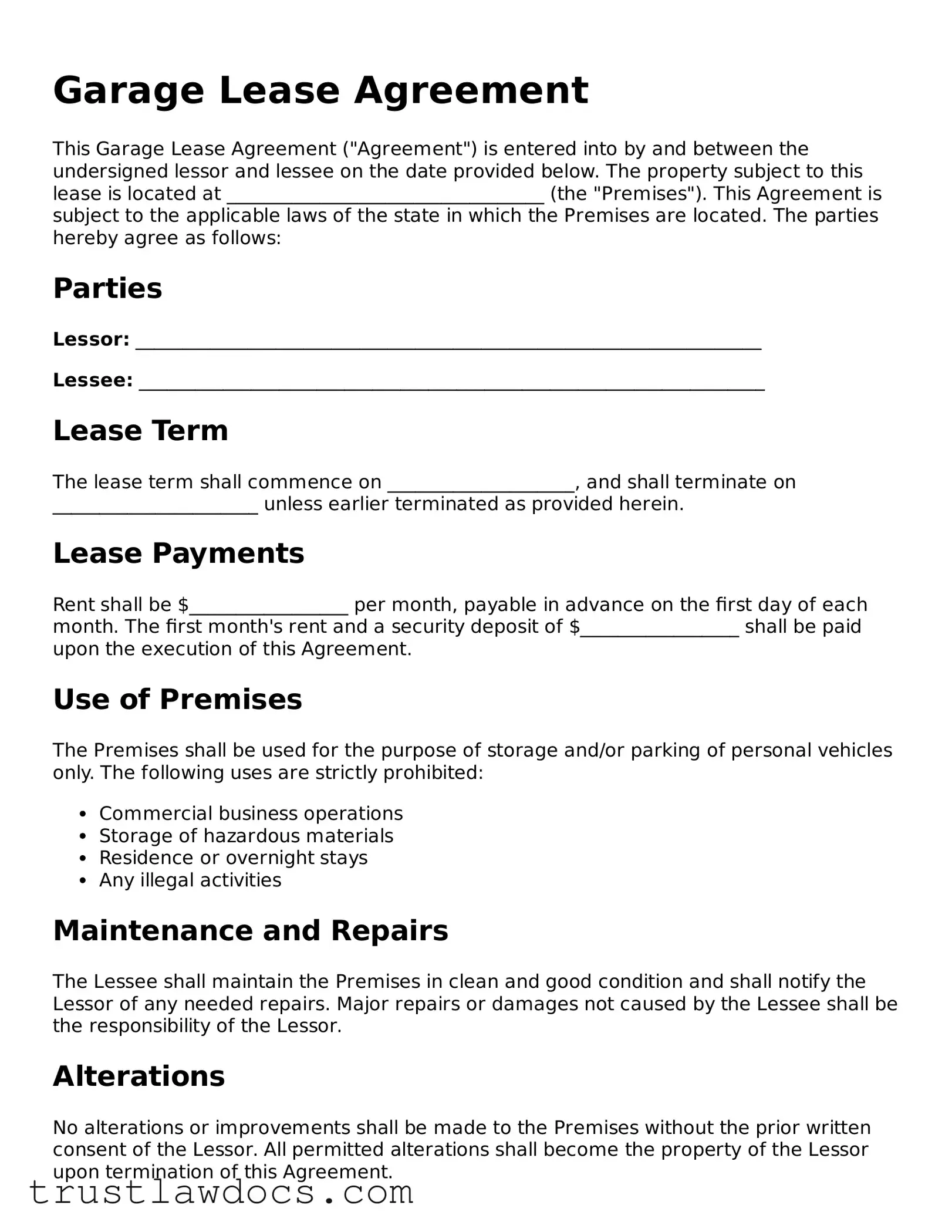Garage Lease Agreement
This Garage Lease Agreement ("Agreement") is entered into by and between the undersigned lessor and lessee on the date provided below. The property subject to this lease is located at __________________________________ (the "Premises"). This Agreement is subject to the applicable laws of the state in which the Premises are located. The parties hereby agree as follows:
Parties
Lessor: ___________________________________________________________________
Lessee: ___________________________________________________________________
Lease Term
The lease term shall commence on ____________________, and shall terminate on ______________________ unless earlier terminated as provided herein.
Lease Payments
Rent shall be $_________________ per month, payable in advance on the first day of each month. The first month's rent and a security deposit of $_________________ shall be paid upon the execution of this Agreement.
Use of Premises
The Premises shall be used for the purpose of storage and/or parking of personal vehicles only. The following uses are strictly prohibited:
- Commercial business operations
- Storage of hazardous materials
- Residence or overnight stays
- Any illegal activities
Maintenance and Repairs
The Lessee shall maintain the Premises in clean and good condition and shall notify the Lessor of any needed repairs. Major repairs or damages not caused by the Lessee shall be the responsibility of the Lessor.
Alterations
No alterations or improvements shall be made to the Premises without the prior written consent of the Lessor. All permitted alterations shall become the property of the Lessor upon termination of this Agreement.
Termination
Either party may terminate this Agreement with a 30-day written notice to the other party. Upon termination, the Lessee shall vacate the Premises and return it to the Lessor in the same condition as at the beginning of the lease term, reasonable wear and tear excepted.
Security Deposit
The security deposit shall be returned to the Lessee within ______ days after the termination of this lease, less any deductions for damages to the Premises beyond reasonable wear and tear.
Binding Effect
This Agreement shall be binding upon and inure to the benefit of the parties hereto and their respective heirs, executors, administrators, and assigns.
Governing Law
This Agreement shall be governed by and construed in accordance with the laws of the State in which the Premises are located, without giving effect to any choice of law or conflict of laws provisions.
Entire Agreement
This document, along with any attached exhibits or addenda, constitutes the entire agreement between the parties concerning the subject matter hereof and supersedes all prior agreements, understandings, negotiations, and discussions, whether oral or written. No amendment to or modification of this Agreement shall be binding unless in writing and signed by both parties.
IN WITNESS WHEREOF, the parties have executed this Garage Lease Agreement as of the date first above written.
______________________________________
Lessor Signature
______________________________________
Lessee Signature
Date: ________________________
